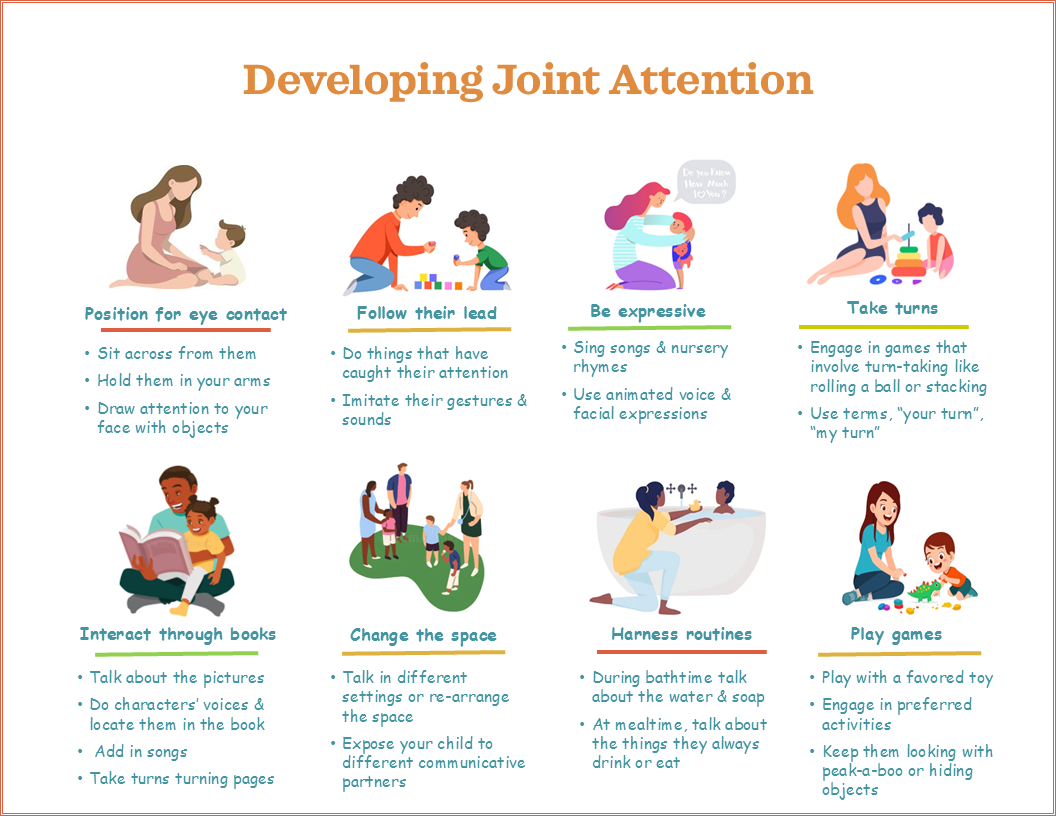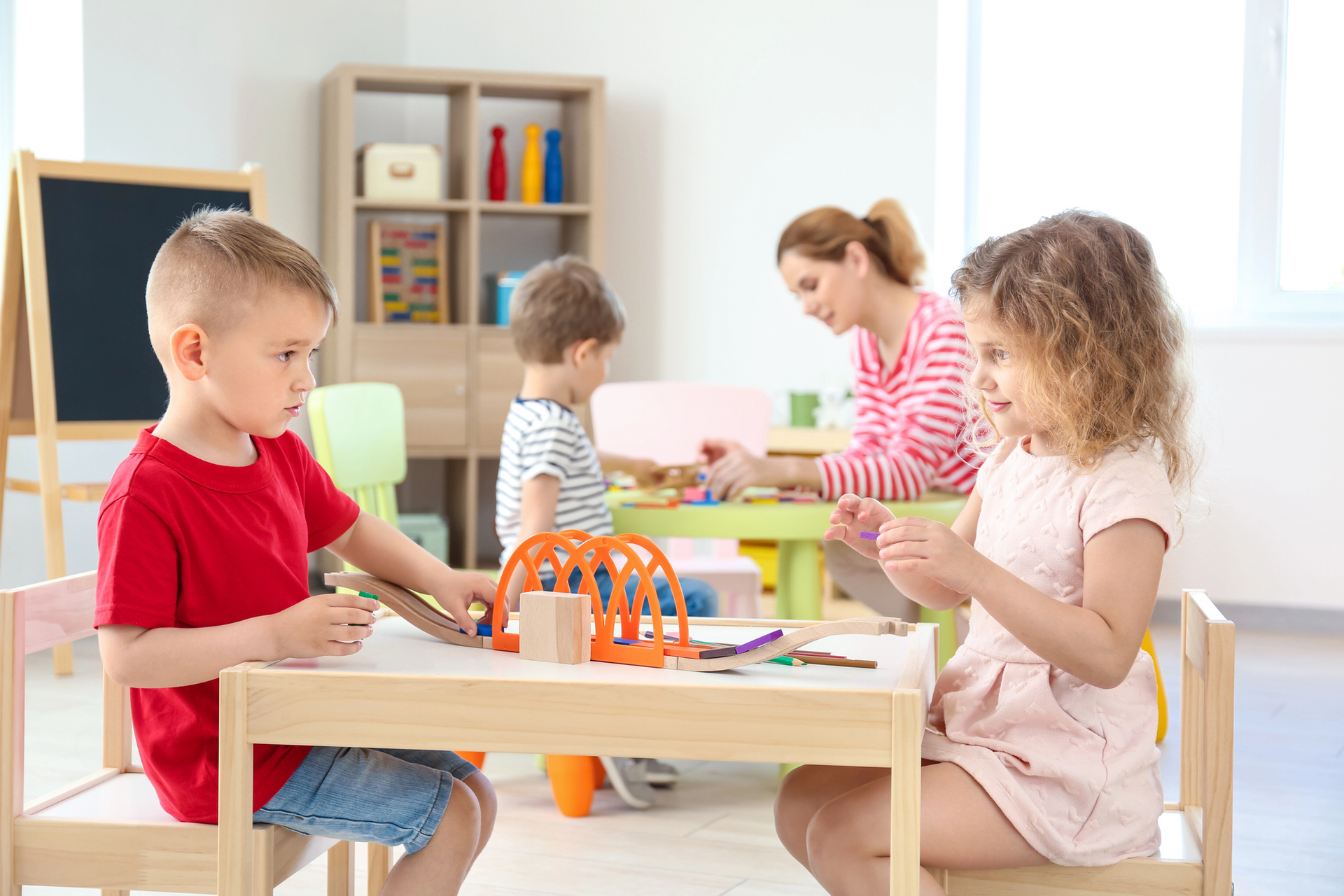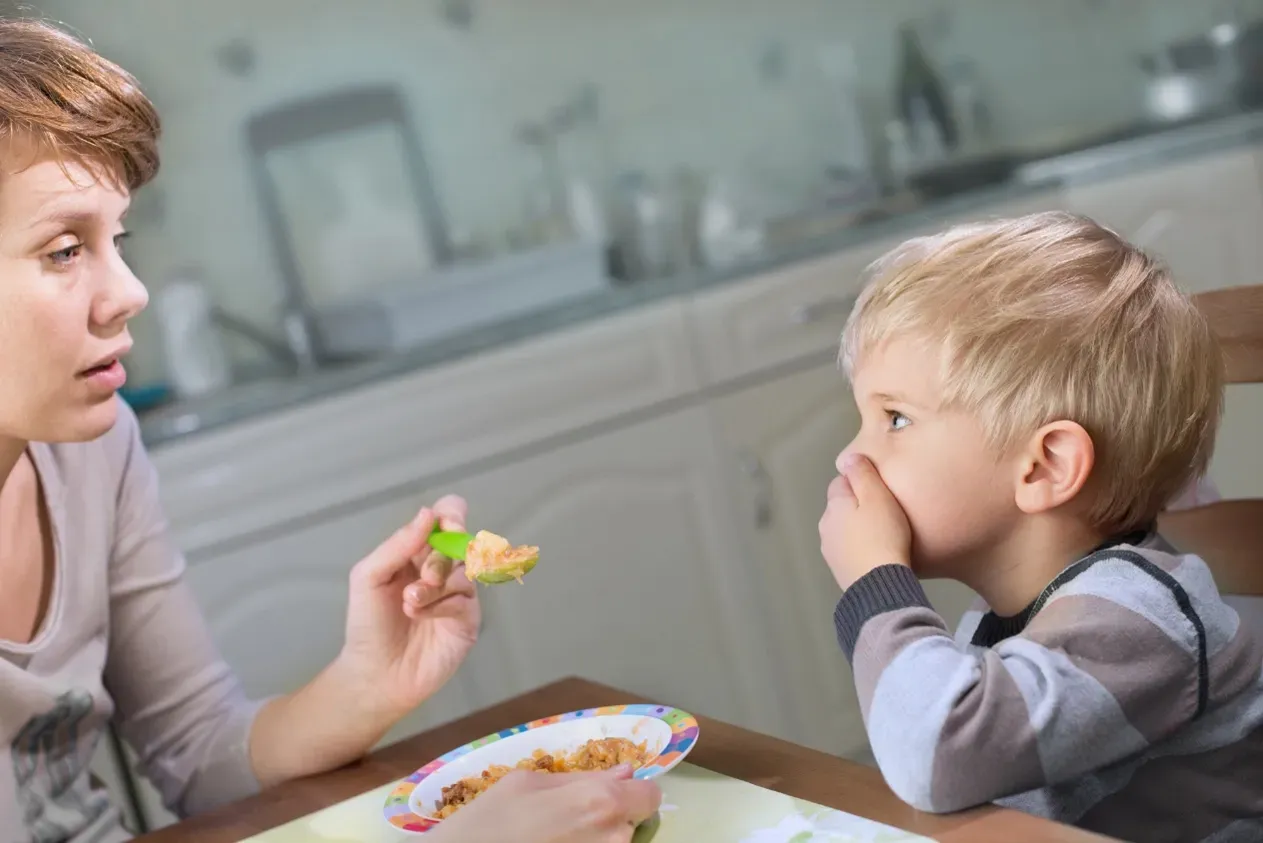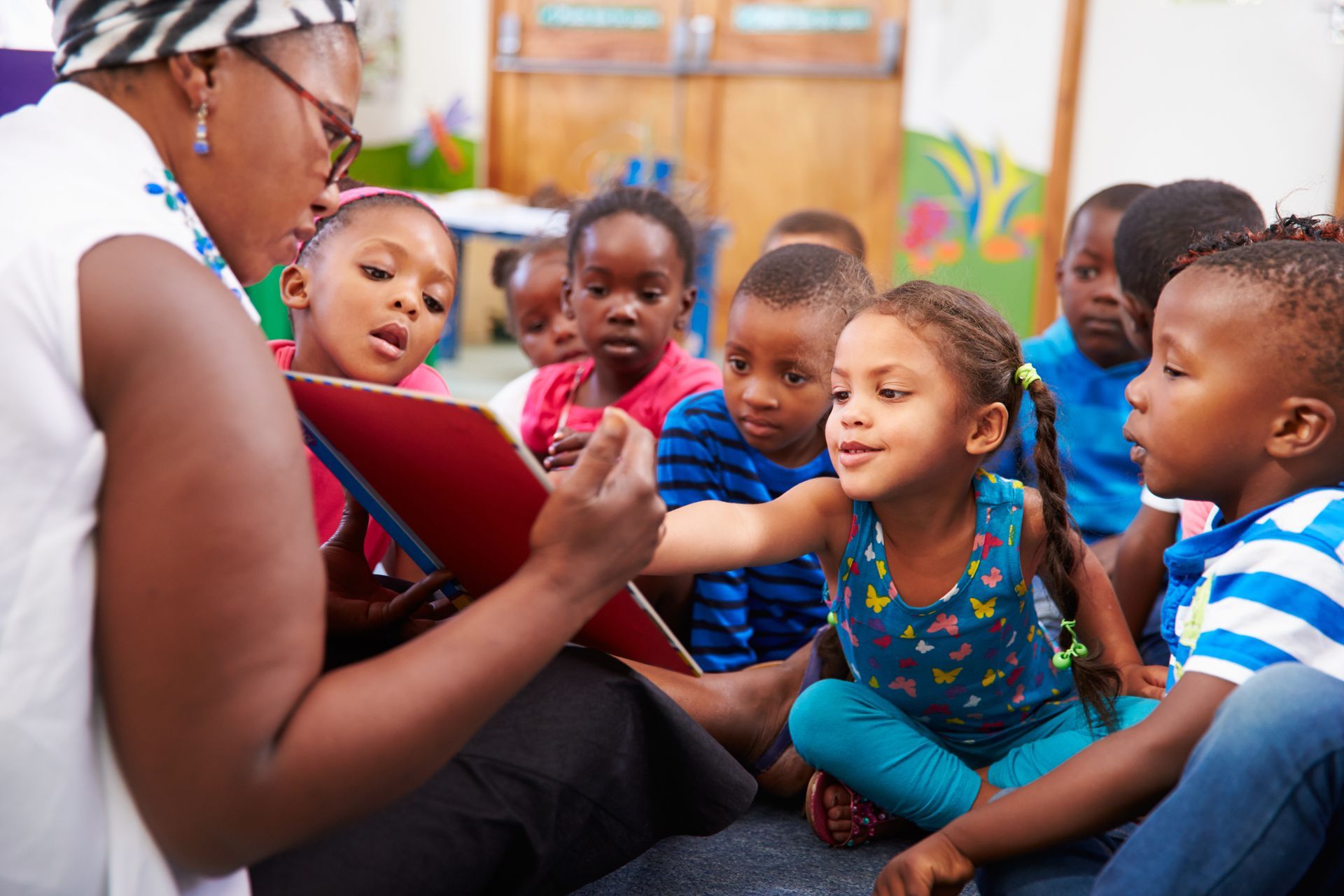Email: info@appliedba.com
Phone: 770-462-8550
Joint Attention – What is it and why is it important?
Joint attention is an important developmental milestone for children. This fundamental ability typically develops early in life and serves as the basis for many other skills. If a baby seldom participates in this kind of behavior, if she doesn't have the motivation to transform personal experiences into shared ones, she will miss important opportunities that connect her to the cultural environment and that lay the foundation for her ongoing social, cognitive, and emotional development [4].
What is Joint Attention?
Joint attention is when two people concentrate on the same object or event together as a unit [3]. It requires awareness by both individuals of the object of focus and active engagement in the interaction [1]. Joint attention can be experienced in two ways: 1) through initiating joint attention, and 2) through responding to joint attention. Initiating joint attention occurs when the child establishes the shared attention activity by pointing to or looking at an object. Responding to joint attention occurs when the caregiver initiates joint attention, and the child responds by either looking at the object or in a specified direction, or by coming to an indicated location. Many children on the autism spectrum tend to respond more readily to shared attention than they do when it comes to initiating it [2].
Joint attention emerges when infants learn to combine two previously separate behaviors – engaging socially with others and focusing on objects or events. This ability develops as they acquire foundational skills, such as recognizing where someone is looking, or following one’s gaze. Children who are learning social and communication skills in a typical way normally begin to show joint attention by the time they reach 12 months of age [6].
As babies reach the 9- to 12-month mark, they become more adept at following their caregiver's gaze and start to initiate new interactions by pointing and making sounds to draw attention to objects. By 18 months, joint attention becomes a well-established behavior. During this time, babies can look at an object and then at a caregiver, signaling their wish to share focus on that object [1].
Joint attention for children with autism differs from their peers. Children with autism might not respond to a caregiver's gaze or pointing as typically expected. They may also be less likely to initiate joint attention compared to their peers. Additionally, their focus may lean more towards objects rather than social interactions with people.
Why is Joint Attention important?
Joint attention is an important skill for communication and language development. Its significance lies in the fact that engaging with others non-verbally—through eye contact, smiles, and gestures—goes hand in hand with the ability to communicate. Parents often become concerned early in their child's development when they notice significant differences in joint attention or a lack of it altogether. They might observe that their child appears content playing alone, doesn’t respond when called by name, and doesn’t bring toys over to share with them [3].
Studies also show that early joint attention skills have a pivotal role in defining early manifestations of autism with the inability to initiate joint attention at 8 months and respond to it at 12 months being associated with an increased risk of developing autism by the time a child reaches 18 months. [5]. Babies who are later identified as having autism tend to smile less and engage with others infrequently, showing little effort to capture someone else's attention. Research into early development has also pointed out the absence of joint attention and shared positive emotions between these children and their family members. While the inability to speak often becomes a significant worry that prompts parents to seek assistance, the deeper issues of lacking reciprocal interaction and joint attention are some of the most harmful aspects of the condition [3].
Research indicates that acquiring joint attention in early childhood can greatly improve language development for children. If joint attention skills take longer to develop, this can cause a delay in the acquisition of language skills. However, it is documented that enhanced language abilities contribute to better social interactions with adults and peers, as well as improved academic performance and greater success in adult life and independence. Children on the autism spectrum who develop spoken language skills by age 5 often experience greater success in their education and social interactions than those who don’t achieve these communication milestones in the preschool years [6].
How to build Joint Attention?
Studies on typically developing children and children with autism reveal that those who engage their caregivers in shared communications, such as pointing out interesting toys or events, showing their toys, and looking back and forth between people and activities, tend to pick up language skills at a faster rate [3]. These joint attention activities often happen during fun interactions with caregivers, such as reading a story, constructing a tower, searching for hidden items together, or sharing a meal. See the graphic below for additional ideas.

References:
1. Before Their First Words. Pompeu Fabra University (2015). Joint Attention. Retrieved from https://beforefirstwords.upf.edu/precursors-of-language/joint-attention/#:~:text=Between%206%20and%2012%20months,the%20same%20thing%20as%20them.
2. Butler, J. (July 4, 2024). Joint Attention in Children with Autism Spectrum Disorder. Autism Parenting Magazine. https://www.autismparentingmagazine.com/joint-attention-autism/
3. Kasari, C., Gulsrud, A. C., Wong, C., Kwon, S., & Locke, J. (2010). Randomized Controlled Caregiver Mediated Joint Engagement Intervention for Toddlers with Autism. Journal of Autism and Developmental Disorders, Feb 10; 40(9):1045–1056. doi: 10.1007/s10803-010-0955-5
4. Moll, H. (2024). What We Do and Don’t Know About Joint Attention. Topoi, 43, 247–258. https://doi.org/10.1007/s11245-023-09961-y
5. Montagut-Asunción, M., Crespo-Martín, S., Pastor-Cerezuela, G., & D’Ocon-Giménez, A. (2022). Joint Attention and Its Relationship with Autism Risk Markers at 18 Months of Age. Children (Basel); April 13; 9(4):556. doi: 10.3390/children9040556
6. UNC School of Medicine Department of Health Sciences. About Joint Attention. Retrieved from https://www.med.unc.edu/healthsciences/asap/materials-1/about-joint-attention/#:~:text=Joint%20attention%20is%20important%20in,to%20delays%20in%20developing%20language.






Where children with autism, are children first.
770-462-8550
info@appliedba.com
2930 Horizon Park Drive, Suite D, Suwanee, GA 30024
Business Hours
- Monday
- -
- Tuesday
- -
- Wednesday
- -
- Thursday
- -
- Friday
- -
- Saturday
- Closed
- Sunday
- Closed
Where children with autism, are children first.
2930 Horizon Park Drive, Suite D, Suwanee, GA 30024
Quick Links
Business Hours
- Monday
- -
- Tuesday
- -
- Wednesday
- -
- Thursday
- -
- Friday
- -
- Saturday
- Closed
- Sunday
- Closed
All Rights Reserved | Applied Behavioral Approaches | Website Design by True Digital Marketing
